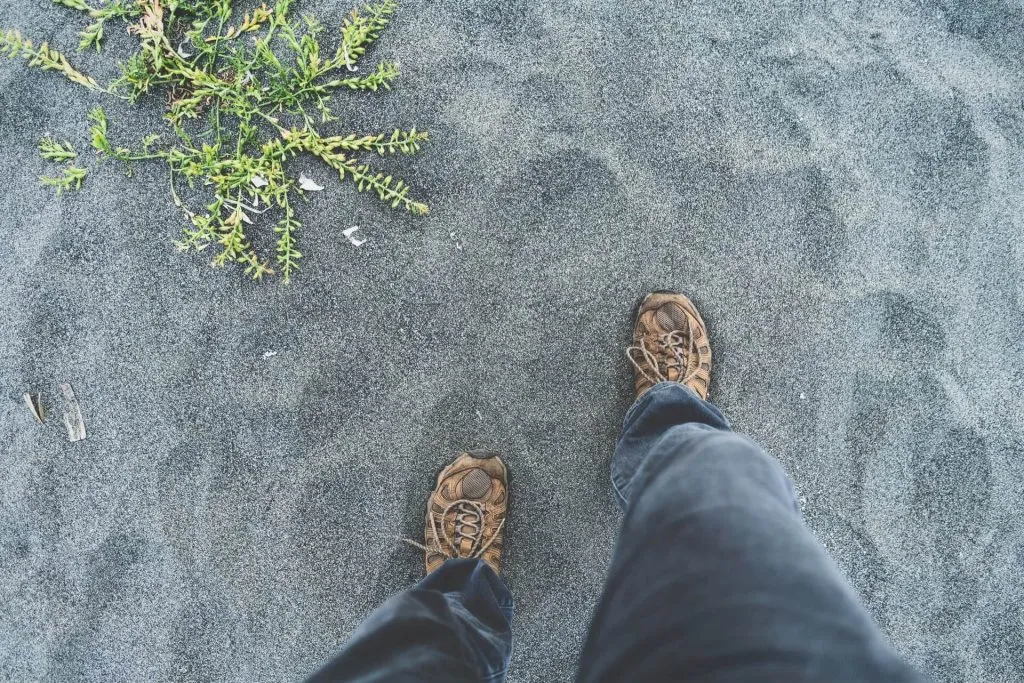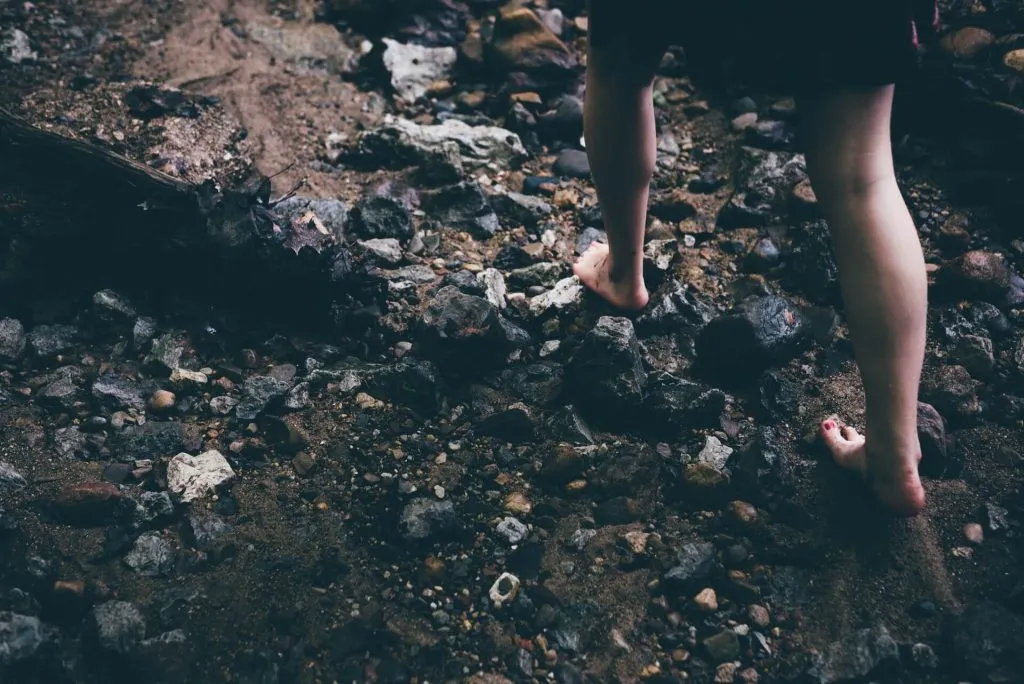
Hiking can already have many obstacles and challenges, especially on a new trail, so the last thing you probably want to think about is your feet. So how can you stop your feet from hurting while you hike? I’ve hiked for many years on a variety of different trails and am happy to share tips on how you can minimize feet pain and be able to enjoy your hikes without thinking about your feet!
To stop your feet from hurting as you hike, wear well fitted hiking shoes and socks, check your pack weight, bring blister protection, and limit moisture. Taking preemptive measures with the right gear for your feet will drastically reduce feet pain on your hike.
Now, depending on how conditioned you are, how strengthened your feet are, how difficult the trail is, and what gear you own, there will be variables you should consider on why your feet hurt and what you can do to prevent this. Let’s now go over things you should know and things you can do to minimize foot pain while hiking.
Why do my feet hurt when hiking?
With so many variables that come into play on why your feet hurt, lets first go over things that you can control. By changing these things you can start to isolate the reasons why your feet hurt and make changes so you don’t experience foot pain on your hikes.
Your feet hurt when hiking due to either incorrectly fitted hiking shoes, socks that don’t wick-moisture, taking on too much too soon for your hikes, or possibly an underlying medical issue.
Wrong Hiking Shoes
One of the main culprits of feet pain from hiking is wearing the wrong pair of shoes. You want to wear hiking shoes that provide good grip, breathability, and contour your feet but not hug them to closely. Your feet will likely swell during hiking so its typically recommended to buy a half size larger.
If your heels are constantly being rubbed, your toes feeling jammed, or you have hot spots at the bottom of your feet, its probably time to explore new hiking shoe options. As you are hiking you want your heels in place and not being rubbed against by your hiking shoes, you want to give your toes ample space to move around, and you want adequate arch support.
Wrong Hiking Socks
Something that most hikers overlook is the socks they hike in. This is one of the seemingly minor pieces of hiking “gear” that is often overlooked, but so very important. You might be wearing socks that are trapping heat and not providing enough padding.
If you decide to get new hiking shoes, the next thing you should consider upgrading is to a pair of hiking socks. A good pair of hiking socks will help your feet breathe, wick away moisture, and provide solid padding . By wicking away moisture, your feet will be less sweaty, which in turn leads to less sweaty feet. If your feet aren’t as sweaty then then will less likely get blisters due to the softening of skin from sweat and friction. Hiking socks was something I completely neglected to think about, but made one of the largest differences in reducing foot pain.
Tough Terrain
Another reason your feet can hurt while hiking is maybe you are choosing hikes that are too long or too challenging for your current fitness-level. Its easy to get excited about hiking and want to tackle tough trails and go peak bagging, but your feet strength and toughness might not be able to keep up with your hiking ambition.
If your feet are hurting from your hikes its likely because your feet aren’t used to the beating they’re taking on your long and challenging hikes. It is important to gradually build your way up so that your feet have time to strengthen and toughen on your journey of hikes. Too much, too soon might be applicable for you.
How do I toughen my feet for hiking?

Training and toughening your feet is a great defense against fighting foot pain, assuming you don’t have any medical or structural issues in your feet. You can definitely train to toughen up your feet to take on challenging hikes with no feet pain.
Training on Trails
The funny thing about hiking is that the best way to strengthen and build your hiking muscles is to hike. If you want to toughen your feet then work your way up gradually on longer hikes to help toughen your feet. This will help build callus on your feet, break in your hiking shoes, contour your hiking shoes to your feet, and slowly build your hiking legs.
Training off-trail
If your schedule doesn’t allow you to consistently hike to build up your muscles than you can do other things at home or at the gym to help strengthen your feet. The next thing you can do is walk around your house barefoot or go to a local park and walk around barefoot. We live our entire lives wearing socks and shoes to protect our feet. This in turn softens the skin on our feet. By walking around barefoot you can help build callus on your feet to help toughen them. Other things you can do is walk around barefoot at the beach, rolling a golf ball or tennis ball under the arch of your feet to strengthen your arches. These small exercises will help toughen your feet over time.
Stretching
The next thing you can do to help toughen your feet is to do foot stretches. Doing these stretches will have your feet moving in a wide range of motion. Sitting down, you can do toe raises, stretching your big toe in a circular motion, toe curls, stretching your arch, and finally doing achilles stretches. These stretches can help with flexibility and improve strength of your foot ligaments.
How to treat sore feet after hiking

After a long challenging hike your body and feet are likely tired. The days after your feet can be sore, no matter how many hikes you have been on in the past.
To treat your sore feet after hiking you should take time off from hiking so they can recover, ice your feet if they are feeling especially sore, and add a foot wrap to compress any painful areas. See your foot doctor if you have any persisting pain after more than a week.
Rest Your Feet
When you’re back home from a great hiking adventure, it can be tempting to plan your next hike and jump right in. The best option to help treat your sore feet is to take time off from hiking. This will give your feet a much needed rest so they can recover. Hiking is very taxing on the body, especially the feet, so give your feet ample time to rest and recover.
Ice
If you have lingering soreness then you might want to consider icing your feet. Icing your feet can help reduce swelling and speed up recovery time. Putting ice in your feet will help you with reducing foot inflammation. You can apply ice by putting ice into a zip-lock bag wrapped in a thin towel and pressing it on the desired area for 5 to 15 minutes throughout the day.
Compression
The next thing you should consider doing is wrapping your feet. If your feet are swollen after hiking, then compression from a bandage wrap will help decrease the swollen areas. When wrapping your feet be careful to not wrap it too tightly as it can actually make your swelling worst. If your feet are very swollen then you can rest your feet by laying down and elevating your feet. You want to elevate your feet with pillows so that your feet are slightly above your heart. The elevation will help reduce the swelling. If you notice the pain or swelling persisting after more than 5 days then you should consult with a medical professional.
How do you get rid of hiking pain?
We have talked about many ways to take initiative to prevent hiking pain by having proper hiking shoes, hiking socks, choosing the right hikes, and spreading out your hikes. Sometimes things happen during your hike and you might experience discomfort and pain. So how do you get rid of hiking pain?
If you are experiencing pain while hiking, the main things you can do are reduce your pack weight, apply blister pads or wraps, or carry hiking poles.
Lower Pack Weight
Its good to be prepared when hiking, but sometimes you might be carrying too much. Having too much gear can lead to a heavy pack. The pack can be adding stress to your hips, knees, and feet.
If you are on a backpacking trip then the best thing you can do when you return is look at extra items you brought that you didn’t really use and get rid of them. Then comb through your gear and see which items you can upgrade and reduce in weight. The first thing you can upgrade if your pack. There are now many packs under 1.5 lbs that have great volume. The next things you can look to reducing weight a new tent, sleeping bag, and cooking wear.
Once you have slimmed down your unnecessary gear and upgraded to lighter gear, the next thing you can do is slit your gear. If you are hiking with friends you can ask if they want to share cooking gear or a tent. This will shave off a few more pounds for both parties. The ideal weight of a pack should be no more than 20% of your total body weight. This is a good ratio to stick by as your pack won’t feel like a massive burden with each step you take.
Blister Pads
The next thing you can do to get rid of hiking pain is to apply blister pads to any hot spots or newly formed blisters. Blisters are the worst when hiking and even more painful if they are not covered immediately. There is so much friction and motion from hiking that blisters might make you want to quit. I always bring a few blister pads just in case.
Foot Wrap
Another thing you can do on a hike is to bring compression wraps to help wrap your feet. The wrap will reduce any swelling in your feet or swollen areas. This will provide some pain relief.
Hiking Poles
The last thing you can do to reduce pain is to bring hiking poles. Hiking poles will help you evenly distribute weight and help with balance as you hike. This will lessen the loads on your legs and feet. If you are backpacking then bringing hiking poles can make a world of difference.
Final Thoughts
When you’re about to go on your next hiking trip, we hope these tips will help you be able to relax and enjoy the hike without thinking about your feet too much.
Through trial and error of trying out the right hiking shoes, hiking socks, foot strength training, you’ll likely be able to hike with no pain in your feet. It takes time and patience to toughen your feet, but you will get there!
